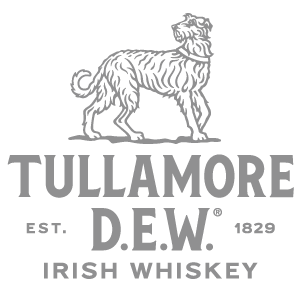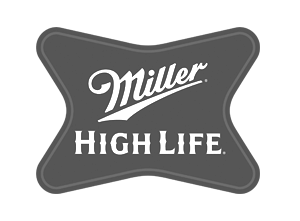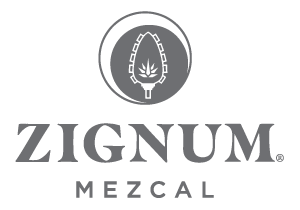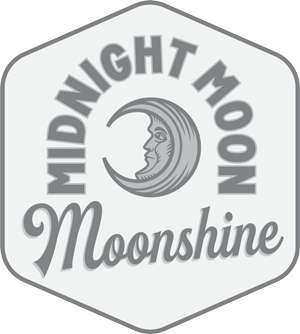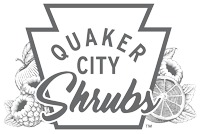The Best Gin Brands to Try Right Now
From old school gin-makers to the new Japanese wave, these are the brands leading the current ginaissance
Gin is back. It’s one of the most versatile liquors behind any bar, and the diversity of gins makes tasting each one all the more intriguing for connoisseurs. Plus, the best gin brands are producing top-tier bottles that match any premium bourbon or Cognac for sip-ability, and can still be used in a very wide range of cocktails.
Gin’s versatility means it’s a liquor for all types of drinkers. With the best examples, you can sip the stuff neat, fix an evening drink or make cocktails for a whole party – all with one bottle. And speaking of cocktails, there are lots to choose from. Although gin has a unique flavor, it’s not as strong as whiskey or tequila, and it’s botanical flavor blends nicely with mixers. Classic examples of gin cocktails include negronis, gin martinis, gin and tonics, tom collins and gimlets, to name a few.
Another reason for gin’s comeback is its craft character. Unlike most liquors, gin has very few regulations; it can be aged for any amount of time, use a variety of mashes and botanicals and can be made anywhere (although some sub-categories of gin have regional restrictions). The only requirements for a liquor to be considered gin is 40% ABV and the inclusion of juniper berries. That’s it. This liberal creation process gives gin brands a ton of freedom to experiment and make something fresh.
But with all the variation between gins (and new gin brands popping up everywhere) finding the right bottle can be challenging. Below are a few pointers for picking the best gin brands, as well as the best bottles of gin we’re buying right now.
What Are the Best Gin Brands?
1. Hendrick’s
Many connoisseurs credit Hendrick’s for the resurgence of gin (the ginaissance, as some call it). The brand launched quite recently by alcohol standards in 1999, but you’ll now find it in every bar and every gin lover’s collection.
The Scottish brand went back to the basics, crafting a premium dry gin that’s just as good neat as it is with tonic. Each bottle contains a blend from two rare stills – a Bennet still and a Carter-Head still – which are combined after separate distillation. Right before bottling, Hendrick’s upgrades their gin with a signature infusion of rose and cucumber. These two ingredients might not sound like game-changers, but they introduce a balanced, light botanical flavor that sets Hendrick’s apart from the pack.

Courtesy Saucey
2. Highclere Castle Dry Gin
Highclere Castle might be best known as the filming location of the Emmy-winning series Downton Abbey, but it’s also the headquarters of a premium, namesake gin brand. The storied estate acts as both the botanical source and inspiration for the gin: “With Highclere, I wanted to truly liquify the estate,” Highclere Caste Gin CEO Adam von Gootkin tells Rolling Stone. “You’re drinking the terroir of a place. You’re drinking these botanicals from a place. These botanicals are special.” After the botanicals are harvested from Highclere Castle, distillation happens at the oldest gin distillery in England, Langley Distillery.
Although the gin is steeped in history thanks to its roots at Highclere and its creation at Langley, the liquor’s flavor is actually quite modern. “It is a London dry gin in every proper way,” says von Gootkin, “But I also wanted to give it a bit of a modern twist.” That modernization takes the form of less juniper, extra citrus and the novel addition of oats. Von Gootkin says that the oat grain “gives it this thick, almost viscous finish that is really soft and velvety like my favorite whiskies.”
Because the juniper is less distinct than old school gins, Highclere also makes a great entry point for any gin newbies. It’s delicious in cocktails, but von Gootkin suggests trying it on the rocks. We recommend taking von Gootkin’s advice — you’ll understand why Highclere has garnered over a dozen prestigious awards all over the globe.

Courtesy Highclere Castle Gin
3. Sipsmith Dry
Sipsmith is another young gin brand taking the liquor to new heights. This London dry is their bread and butter (Sipsmith also has a VJOP or “Very Junipery Over Proof” gin and a few flavored options). The Sipsmith London dry is another great example of a young brand re-mastering the classics. The gin’s distillation process is very traditional, using copper pot stills an a recipe that harkens back to the 18th century.
Thanks to its traditional recipe, the Sipsmith puts juniper berries in the spotlight of the palate. But the gin also features a few welcomed hints of citrus and just a touch of sweetness. The result is a straightforward yet complex gin that you can sip on the rocks or mix in an upgraded negroni.

Courtesy Saucey
4. Ransom Old Tom Gin
If you were to travel back in time to early 18th-century England, most of the gin you’d come across would be Old Tom. Most of the London dry gin (that the masses could afford) was extremely rough at the time, turning most people to the sweeter Old Tom style gin.
Old Tom gins mostly disappeared through the 20th century. But, noticing the resurgence of craft cocktails in the oughts, Ransom distiller Tad Seestedt thought it might be time for Old Toms to make a comeback. Seestedt was right. Ransom’s Old Tom gin has become a hit, especially with bartenders. The gin was developed alongside a historian and a mixologist, resulting in a true 18th-century revival gin that makes a mean cocktail.

Courtesy Saucey
5. AMASS Los Angeles Dry Gin
When we say that gin is exciting right now, we’re talking about brands like AMASS Los Angeles. The inspiration is in the name, as the gin sources botanicals that reflect Southern California’s diverse agricultural offerings. A hefty 29 botanicals make up the gin, and some of them are quite unexpected, such as California Bay, Hibiscus and two kinds of mushrooms. The flavor is primarily earthy and herbal, with strong ingredients – namely cardamom and coriander – giving the juniper some competition. Overall, it’s an exciting, complex gin that every connoisseur needs to try.

Courtesy Drizly.com
6. Nolet’s Silver
Nolet’s Silver premium dry gin descends from gin’s origin region in the Netherlands. It’s what Nolet began making way back in 1691, although the brand is now best known as the distillers of Ketel One vodka.
Although you might expect a time-honed traditional gin from such an old brand, you’d be wrong. This Nolet’s Silver is one of the most boundary-pushing premium gins on the market. The gin is surprisingly defined by a scarceness of juniper and a focus on botanicals. These leading ingredients include rose, peach and tart raspberry, which create a smooth, fruity flavor that will make any gin skeptic rethink the liquor. For experienced gin drinkers, Nolet’s Silver is a fun mix-up to expand your gin palate.

Courtesy Drizly.com
7. Monkey 47 Dry Gin
Most gins feature a dozen or so botanicals at the most. Monkey 47, as the name suggests, uses 47 botanicals, including signature lingonberries. All the ingredients are picked in the distiller’s backyard: the Black Forest in Germany. Somehow, the brand turns this cornucopia of ingredients into one of the best dry gins on the market. The flavor is certainly bold and complex (possibly more so than any other gin on the market), but the drinking experience gracefully meanders from one flavor to the next. You’ll notice pepper, flowers, citrus and bitter fruit in an equally boisterous degree, making Monkey 47 one of – if not the best gin for slow sipping.

Courtesy Drizly.com
8. Plymouth Gin
If you’re looking for a slightly more earthy, citrus-forward version of a traditional London dry, try this equally-traditional Plymouth gin. The earthy taste comes from a unique 230-year-old recipe that uses seven botanicals, including coriander seed, dried sweet orange peels, cardamom, angelica root, and orris root, in addition to juniper. Surprisingly, it’s also drier tasting than most London drys, making it an excellent choice in cocktails. In fact, it was featured 23 times in the famous Savoy Cocktail Book.
The Plymouth brand is the last true Plymouth-style gin because they occupy the only remaining distillery in Plymouth, England. It’s also the oldest distillery in England, and has proved to be a leading brand in the current ginaissance, just as it was in the gin explosion of the early 20th century.

Courtesy Drizly.com
9. Plymouth Navy Strength Gin
Another great offering from Plymouth is their Navy Strength gin. Plymouth was actually the first brand to officially market Navy Strength gin in 1997, which has since become a whole category of its own.
If you’re unfamiliar with Navy Strength, it just means strong, or ‘over-proof.’ This bottle boasts an ABV of 57%, which is a substantial jump from the 45%-ish ABV of normal gin. Plymouth’s Navy Strength is one of the best because it actually wrangles this high alcohol content with a balanced and surprisingly smooth taste. Of course, the punchiness is still there, making the Navy Strength gin a great option for bold cocktails and adventurous gin tasting.

Courtesy Drizly.com
10. Ki No Bi Kyoto Dry Gin
Japanese spirits are quickly becoming a mainstay in North American drinking culture. Still, many gin enthusiasts haven’t tried the best of what Japanese distillers can do with juniper. Ki No Bi is a great place to start. It’s an ultra-premium dry gin made in Kyoto using primarily Japanese ingredients. The gin’s base is a rice spirit, while botanicals include yuzu, hinoki (Japanese cypress), bamboo and gyokuro green tea. Ki No Bi practices a very different distillation process than most gins by individually distilling six categories of botanicals: base, citrus, tea, herbal, spice and floral. These six individually-distilled botanicals are then blended to create a bold, distinct flavor that deserves to be sipped on its own at least once before mixing in cocktails.

Courtesy Drizly.com
11. Suntory Roku
Another Japanese brand, Suntory, has been blowing up in just about every liquor category, making our list of best whiskey brands of 2021. Suntory Roku is the brand’s take on dry gin, offering a clean, balanced bottle that just might become your go-to for cocktails. The name – Roku is Japanese for “six,” denoting the six special Japanese botanicals used in the gin. These are green tea sencha and gyokuro, cherry blossom and leaves, yuzu and Japanese pepper. Yuzu (a delicious type of mandarin orange) is maybe the most exciting, offering a touch of crisp citrus. In short, it’s a very tame yet complex gin that’s perfect for dressing up in negronis or making clean, dry martinis.

Courtesy Drizly.com
12. The Botanist Islay Dry Gin
While many modern gins veer away from juniper, The Botanist brings the attention back to gin’s foremost ingredient. This makes it a great choice for purists, as well as newbies looking to appreciate fine, juniper-forward gin.
The Botanist has a total of 22 botanicals – all of which are hand-foraged on the Scottish island of Islay. All these botanicals come through in each step of the tasting process with a crisp, flowery, citrus flavor. This makes it one of the best gins for sipping straight, although it’s also great for upgraded cocktails.

Courtesy Drizly.com
https://www.rollingstone.com/product-recommendations/lifestyle/best-gin-brands-1118334/









